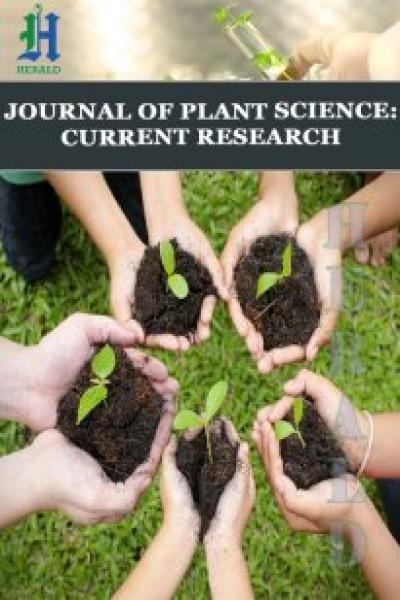
Toxic Plants of the Eastern Ghats Kalvarayan Hills of the Southern Indian State of Tamil Nadu
*Corresponding Author(s):
Manikandan SDepartment Of Botany, AAGAC-Attur, Tamil Nadu, India
Email:manisekar041135@gmail.com
Abstract
The Kalvarayan Hills are a significant range of hills located in Tamil Nadu, a state in southern India, in the Eastern Ghats. They divide the Kaveri River basin to the south from the Palar River basin to the north, along with the Pachaimalai, Javadi, and Shevaroy hills. The hills reach northeast from the Salem District and cross several Tamil Nadu districts. The Salem and Villupuram districts are divided by the range. The northern section of the Kalvarayans is known as the Chinna ("small") Kalrayans, and the southern section is known as the Periya ("large") Kalrayans. The Periya Kalrayans are typically 4000 feet tall, compared to the Chinna Kalrayans' average height of 2700 feet. Kalrayans forest of about 18-20 thousand flowering plants present in our country, many plant species are utilized as food, fodder, medicine and fiber. Quite a few flowering plant species are poisonous. Understanding dangerous plants is crucial because some of them are utilized medicinally. Toxic compounds such alkaloids, glucosides, saponins, amines, tannins, resins, etc. are to blame for the poisonous qualities. A description of 32 poisonous plants found in Tamil Nadu's Kalrayans Hills has been given. During an ethnobotanical field survey, information about dangerous plant species was obtained from the tribal members. According to the study, tribal people not only know about these poisonous plants and their negative consequences, but they also use them sparingly to keep insects, bugs, mosquitoes, and other dangerous species at bay.
Keywords
Fodder; Food; Kaveri River; Medicine Kalrayans hills; Palar river ethno medicine; Poisonous plants
Introduction
The hills reach northeast from the Salem District and cross several Tamil Nadu districts. The Salem and Villupuram districts are divided by the range. The Kalrayans are split into two groups: the Periya ("large") Kalrayans, who live in the south, and the Chinna ("small") Kalrayans, who live in the north. The Periya Kalrayans are on average 4000 feet tall, while the Chinna Kalrayans are on average 2700 feet tall. The range is generally smooth and has soil that is good for plant development. Scrub can be found up to 400 metres above sea level [1], whereas deciduous forests can be found up to 800 meters above sea level. Sholas, a type of high-altitude stunted evergreen forest, can be found growing on isolated plateaus. Though the forest stand is growing, due to “habitat uniqueness, human impacts and cultural tradition,” conservation efforts are needed [2].
In many regions of the world, traditional knowledge about medicinal plants is still being recorded. The failure to pass on knowledge to younger generations, the potential application of this knowledge to the exploitation of plants for pharmaceutical industries, and the requirement to preserve rare or highly valued plant species for use in traditional medicine serve as the main motivations for such efforts to continue [3]. In the southern Western Ghuts of India, Ayyanar and Ignacimuthu (2005) conducted an ethnobotanical survey among various ethnic groups. The inquiry revealed that 20 different species of medicinal herbs were employed by the local tribes. In Ethiopia, medications were made in the forms of powder, decoction, paste, and a town. Ethnomedicobotany is one of the tools that help to deal with the direct relationship of plants and man to prevent and cure ailments. Poisonous plants are plants, which as a whole or part thereof under all or certain conditions and in a manner and in amount likely to be taken or brought into contact with an organism will exert harmful effects or cause death either immediately or by reason of cumulative action of the toxic property due to presence of known or unknown chemical substances in it and not by mechanical action [4]. The poisonous nature of whole plant or any plant part may be due to production of toxic substances such as alkaloids, glucosides, amines, toxalbumins, picrotoxins, resins, saponins, tannins, essential oils, etc., many of which are harmful to man and animal life, at least under certain conditions the hills cover an area of 1095 square kilometers and are between 2000 and 3000 feet tall. Tamil Nadu, which is in the country's Eastern Ghats region, is located between 78.7358 and 11.7043 latitudes. The Gomukhi Dam, Megam Falls, and Periyar Falls are the types of locations that evoke the sensation of splashing cool, floral-scented water on your face on a hot summer day. Kalrayan Hill will undoubtedly appeal to adventure seekers and hikers. These hills provide a calm atmosphere and a moderate climate. On the hills lies a stunning botanical garden [5].
It's fascinating to observe the primitive societies. Except for a few remote tribal villages, a significant portion of the hill range remains unknown and undeveloped. Salem is roughly 70 KM away from Kalrayan Hills, whereas Kallakurichi is the closest city at about 56 KM. India is renowned for its tremendous biological diversity, with more than 17,500 wild plant species, 4,000 of which have medicinal significance (1997). 1,200 medicinal plants are listed in ancient Indian writings like the Jain and Mudgal, indicating that the use of plants as medicine is not new (1999) [6]. Even today, 80 % of the world’s population relies on traditional plant medicine as also Indian by various rural and tribal communities through Indian system of medicine and other undocumented traditional practices [7].
Different climatic zones of the state have herbal plants that can be used to make Ayurvedic, Unani, Sidha, and homoeopathic medication and they virtually live in seclusion due to different physical obstacles, which helps to preserve their traditional wisdom. The Kalrayan Hills' traditional knowledge of medicinal and toxic plants has so been attempted to be documented [8]. Karalar, Jagirdhars (Poligars), Sadaya Goundan, Kurumba Goundan, and Arya Goundan are some of the major tribes. These tribes mainly depend upon their surrounding forests as a source of livelihood. These forests have been life supporting for tribal people since ages and their culture is deeply related with forests. The poisonous plants of India have been described by few workers. A lot of work has been done on the vegetation of Tamil Nadu and traditional uses of plants but no work has been done specifically on poisonous plants of Tamil Nadu.
Methodology
A folk botanical survey of poisonous plants was carried out in Kalrayan Hills, Tamil Nadu. The hills located in the Eastern Ghats of the southern Indian state of Tamil Nadu. Along with the Pachaimalai, Javadi, and Shevaroy hills, they separate the Kaveri River basin to the south from the Palar River basin to the north. The hills range in height from 2000 feet to 3000 feet and extend over an area of 1095 square kilometers. It straddles a number of Tamil Nadu districts, extending northeast from the Salem District [9]. The range serves as a boundary between the Salem and Villupuram districts. The tribals are divided into two sections, the northern section, referred to as the Chinna ("little") Kalrayans, and the southern section, called the Periya ("big") Kalrayans. The Chinna Kalrayans average 2700 feet in height, while the Periya Kalrayans average 4000 feet. The range as a whole is fairly smooth, with soil well-suited for plant growth. Scrub jungles reach up to 400 meters’ in altitude [10], while deciduous forests can be found between above 800 meters’.Sholas, a type of high-altitude stunted evergreen forest, can be found growing on isolated plateaus [11].
Before launching into the fieldwork, rapport was established with one or two persons preferably the chief, whose guidance was sought and contacts were then established with other tribals of the locality. The local informants were the medicine men, men and women working in the field, village headman, priest and other community leaders. Study sites were visited with the local medicine men. The persons above the age of 60 yrs have accurate information regarding their old traditions [12]. Generally, two types of interviews were taken, firstly of individual and secondly of groups. Of individuals, persons were selected at random on the way or entering a hut, finding out knowledgeable individuals from the village or also the nattanmai (village priest) or the headman. In group interviews, more than one individual were approached, after explaining the purpose interviews were taken [13].
Conservation measures are required despite the fact that the forest stand is expanding due to "habitat uniqueness, human effects, and cultural heritage." The indigenous people still use plants that naturally grow in the area as well as those that have been cultivated for use in herbal medicine. Traditional medical plant knowledge in the study area is still based on recollections of what people acquired from kalvarayans. Thus, it is crucial to preserve this ancient knowledge [14]. During each visit, information was gathered utilizing the ethno-botanical enquiry approach through observation, participation, and face-to-face interviews with adult villagers, local healers, and herbalists. Diseases treated, types of diseases treated, dosages, and delivery methods were all meticulously recorded in the field. Most of the people were open to sharing their traditional understanding of herbal treatment [15].
Results And Disscusion
Throughout 2021–2022, ethnobotanical field visits were held in several tribal communities and forested regions of the Kalvarayan Hills in Tamil Nadu (Figures 1 & 2). Many tribe members and village medicine men were aware of the deadly plants (Figure 3). Information were recorded on these plants and plant parts, which they use for poisoning arrow heads, stupefying fishes, driving away the insects and bugs from hut and killing vermin, body lice and worms. To determine the authenticity of information collected during field work, the data were cross-checked from different informants [16-18]. Thus, only the specific and reliable information cross-checked with at least 13 informants has been incorporated. The information provided by the tribals has been compared with the published literature. The collected plants were identified at the Herbarium of Botanical survey of India (BSI), Coimbatore, and Tamil Nadu (Table 1). All the collected specimens are deposited in the Herbarium of Laboratory of Environmental science, Department of Botany, Annamalai University, wing DDE Annamalai nagar, Tamil Nadu, for further reference.
|
S.no |
Plant name |
Family |
Local name |
P/E
|
Use |
|
1 |
Butea monosperma (Lam.) Taub. |
Papilionacea |
Purasu |
Fish poison. |
Reduce blood sugar levels |
|
2 |
Calotropis procera (Ait)R. Br. |
Asclepiadaceae |
Erukku |
Injurious to eyes, causes blindness |
Cure tuberculosis. |
|
3 |
Catharanthus pusillus (Murr.) Don |
Apocynaceae |
milakayc cakkalatti |
Temporary blindness, rashes all over the body |
Ornamental plants |
|
4 |
Catharanthus roseus (L.) Don |
Apocynaceae |
Nithyakayani |
poison to heart |
Anti-cancer activity |
|
5 |
Cuscuta reflexa Roxb. |
Cuscutaceae |
Akasvalli |
abortion |
- |
|
6 |
Datura metal Linn. |
Solanaceae |
Ommatthai |
Whole plant is toxic |
Wound healing |
|
7 |
Dioscorea bulbifera Linn. |
Dioscoreaceae |
Pannukkizhangu |
Affect respiratory system |
Edible tuber |
|
8 |
Euphorbia hirta Linn. |
Euphorbiaceae |
Amman paccharasi |
Affect respiratory system, latex is injurious to eyes |
Root decoction is used as abortifacient |
|
9 |
Euphorbia neriifolia Linn. |
Euphorbiaceae |
Perumbu Kalli |
latex is injurious to eyes |
Root decoction is used as abortifacient |
|
10 |
Gloriosa superba Linn. |
Liliaceae |
Chengkandhal |
gastrointestinal irritance, vomiting |
Ornamental plants |
|
11 |
Holoptelea integrifolia Planch. |
Ulmaceae |
Aavimaram |
fish poison. |
Ornamental plants |
|
12 |
Jatropha curcas Linn. |
Euphorbiaceae |
Kattamanakku |
nausea, vomiting burning stomach, unconsciousness |
Biodiesel |
|
13 |
Jatropha gossypifolia Linn. |
Euphorbiaceae |
Mulkathiri |
nausea, vomiting burning stomach, unconsciousness |
Biodiesel |
|
14 |
Lantana camara Linn. |
Verbenaceae |
Unni Chedi |
injury to liver, ultimately death |
Ornamental plants |
|
15 |
Melia azedarach Linn. |
Meliaceae |
Kattu vembhu |
irritation, nausea and degeneration of the liver and kidney |
Antiviral activity |
|
16 |
Moringa oleifera Lam. |
Moringaceae |
kattumurungai |
Root band bark decoction is Abortifacient |
vegetable |
|
17 |
Mucuna pruiens (Linn.) DC. |
Fabaceae |
Poonaikali |
Skin itching and sometimes cause blister and dermatitis. |
Edible seed |
|
18 |
Nerium indicum Mill. |
Apocynaceae |
Arali, |
Suicidal poisonous |
Ornametplants |
|
19 |
Parthenium hysterophorus Linn. |
Asteraceae |
Parthenium |
causes severe diarrhoea
|
- |
|
20 |
Ricinus communis Linn. |
Euphorbiaceae |
Amanakku |
vomiting, gastroenteritis and circulatory collapse
|
Small Quantity cures constipation |
|
21 |
Solanum virginianum Linn. |
Solanaceae |
kandankathiri |
More quantity is poisonous and Causes death of mother. |
-- |
|
22 |
Urginea indica (Roxb.) Kunth |
Liliaceae |
Narivenkayam |
nausea, bloody urine, heart and paralysis, |
-
- |
|
23 |
Abrus Precatorius. Linn. |
Fabaceae |
Kundrimani |
The seeds also contain an amino acid known as abrine followed by death. |
joint pains and paralysis |
|
24 |
Cascabela thevetia |
Apocynaceae |
Manjal arali |
Seed consume Followed by death. |
Ornamental plants |
|
25 |
Ipomoeapandurata Linn. |
Convolvulaceae |
Adampu kodi |
Problem for Cats Dogs’Horses |
Roots can be eaten cooked, but raw, are a purgative |
|
26 |
Rauwolfia tetraphylla L. |
Apocynaceae |
Sarpakandham |
Skin itching and sometimes cause blister and dermatitis. |
hypertension cardiovascular diseases allopathic medicine |
|
27 |
DracaenaTrifasciata Linn. |
Asparagaceae |
Marul kattarazhai |
A high-risk is its toxicity Saponin. |
treat ringworm and fungal diseases |
Table 1: Poisonous plants Use and poison effect of the Eastern Ghats Kalvarayan hills of the southern Indian state of Tamil Nadu.
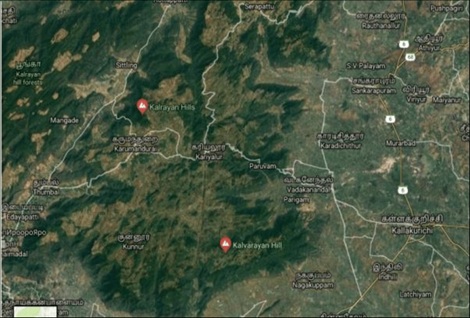 Figure 1: Satellite view of kalvarayan hills.
Figure 1: Satellite view of kalvarayan hills.
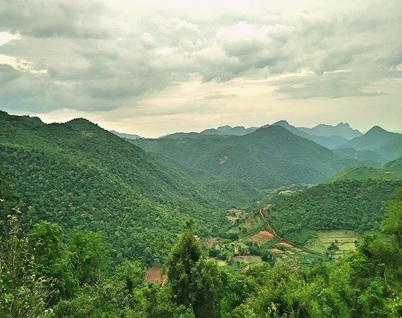 Figure 2: Partial view of kalvarayan hills.
Figure 2: Partial view of kalvarayan hills.
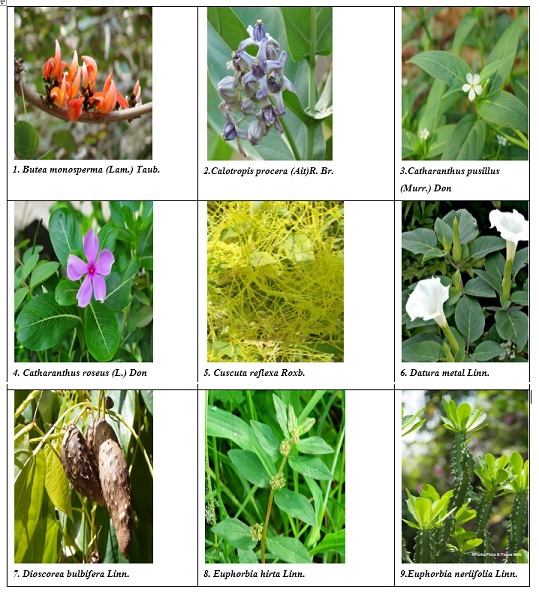
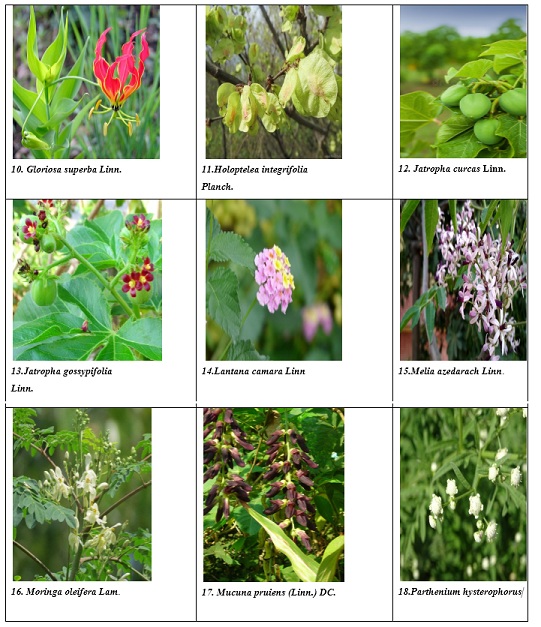
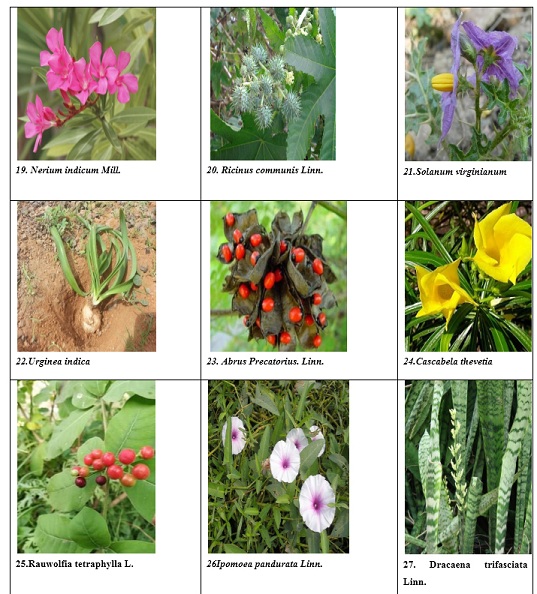 Figure 3: Toxic plants of the Eastern Ghats Kalvarayan hills of the southern Indian state of Tamil Nadu.
Figure 3: Toxic plants of the Eastern Ghats Kalvarayan hills of the southern Indian state of Tamil Nadu.
Conclusion
The study discusses 27 dangerous plant species from 14 different families. The bulk of plant species' poisonous elements were seeds, latex, and root or root bark. Aside from this, poisonous components of various plants included fruits, stem bark, tubers or bulbs, and, in some cases, the entire plant. Some plants are poisonous to both humans and livestock, whereas others are just poisonous to humans. The toxicity of a plant or plant part is primarily determined by the amount consumed. Plants demonstrate therapeutic usefulness in small quantities, but harmful effects in larger quantities. The importance of wild dangerous plants in terms of economic and toxicological value cannot be overstated. The study of the poisonous plants of Tamil Nadu's Kalvarayan hills reveals its economic, toxicological, and medicinal values. On the one hand, these plants can cause major health problems and even death, yet in controlled amounts many of them can also be effective illness cures.
Acknowledgement
The Department of Botany and the administration at Annamalai University in Tamil Nadu are to be thanked for their assistance in finalizing the identification of dangerous plants.
References
- Chopra RN, Badhwar RL, Ghosh S (1949) Poisonous plants of India. Agricultural Research 2.
- Jain SK (1991) Dictionary of Indian Folk Medicine and Ethno botany. AGRIS 24-28.
- Jain SK (1999) Dictionary of Ethno veterinary Pants of India.
- Caius JF (2003) The Medicinal and Poisonous Plants of India.
- Bahndari MM (1978) Flora of Indian Desert. Scientific Publishers Jodhpur.
- Shetty BV, Singh V (1993) Flora of Rajasthan Botanical Survey of India, Calcutta.
- Joshi P (1995) Ethnobotany of the Primitive Tribes in Rajasthan. Print well, Jaipur.
- Singh V, Pandey RP (1998) Ethnobotany of Rajasthan India. Scientific Publishers Jodhpur.
- Katewa, SS, Choudhary BL, Anita J, Takhar HK (2001) some plants in folk medicine of Rajsamand district Rajasthan. Ethnobotany 13: 129-134.
- Katewa SS, Chaudhary BL, Jain A, Galav PK (2003) Traditional uses of plant biodiversity from Aravalli hills of Rajasthan. Indian J Traditional Knowledge 2: 27-39.
- Katewa SS, Chaudhary BL, Jain A (2004) Folk herbal medicines from tribal area of Rajasthan. J Ethnopharmacol 92: 41-46.
- Katewa SS, Jain A, Chaudhary BL, Galav PK (2006) some unreported medicinal uses of plants from the tribal area of southern Rajasthan. Bull Bot Surv India and Kolkata 47: 121-130.
- Jain A, Katewa SS, Choudhary BL (2004) Additions to the folk herbal veterinary medicines of southern Rajasthan. J Econ Tax Bot
- Jain A, Katewa SS, Choudhary BL, Galav PK (2004) Folk herbal medicines used in birth control and sexual diseases by tribals of southern Rajasthan, India. J Ethnopharmacol 90: 171-177.
- Jain A, Katewa SS, Galav PK (2005) Some interesting phytotherapeutic claims by the tribals of southern Rajasthan, India. Indian J Traditional Knowledge 4: 291-297.
- Jain A, Katewa SS, Galav PK, Sharma P (2005) Medicinal plant diversity from the Sitamata wildlife sanctuary, Chittorgarh district India. J Ethnopharmacol 102: 143-157.
- Katewa SS, Galav PK (2005) Traditional folk herbal medicines from Shekhawati region of Rajasthan. Indian J Traditional Knowledge 4: 237-245.
- Katewa SS, Galav PK (2006) Additions to traditional folk herbal medicines from Shekhawati region of Rajasthan. Indian J Traditional Knowledge 5: 494-500.
Citation: Manikandan S, Thamizhiniyan P (2022) Toxic Plants of the Eastern Ghats Kalvarayan Hills of the Southern Indian State of Tamil Nadu. J Plant Sci Curr Res 6: 020.
Copyright: © 2022 Manikandan S, et al. This is an open-access article distributed under the terms of the Creative Commons Attribution License, which permits unrestricted use, distribution, and reproduction in any medium, provided the original author and source are credited.
